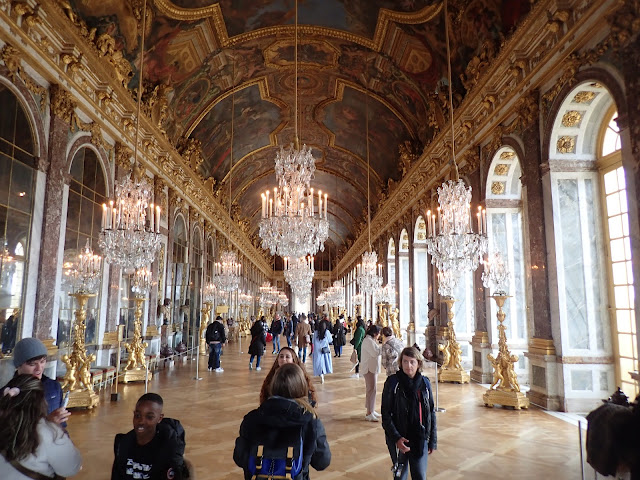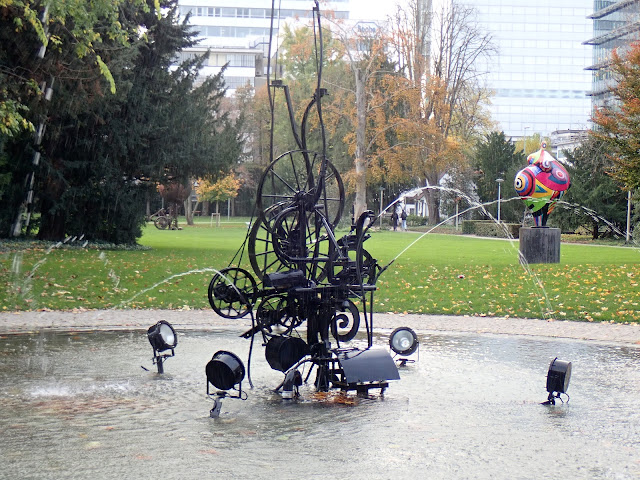From Prescott we moved over to the Colorado River. We stayed in the Parker Strip community just north of Parker and along the Arizona side of the Colorado River. Great state parks exist along the river but we also enjoyed the Pirate's Den RV park with a popular beach bar (The Thirsty Pirate) and the excellent Black Pearl restaurant next to it. Speedboats and Jet Ski's raced up and down the Colorado River which was entertaining to watch albeit with a bit too much noise. There was also a nice golf course across the road (Emerald Canyon) that we enjoyed several times. We did have some problems with WiFi reception but that just meant more time at the beach bar!
With temperatures continuing to be in the high 20's C, we decided to head north to St. George, Utah where 20-25C weather was forecast. We had spent time here before but usually for a day or two as we were heading south or on our way back home, with nice golf courses in the area. It was also the gateway to Zion NP, one of our favourite NP's and we did take a day for yet another return visit to this stunning rock wall park with hiking trails for all levels. We made Hurricane our home for the week in an RV park (Willow Wind) filled with trees providing lots of shade for every site. 3 rounds of golf ensued on rock canyon courses where accuracy was critical and the red rock surroundings a treat for the eyes.
Cooler single digit morning temperatures forced a drive back south 3.5 hours, this time to Laughlin, Nevada for 4 nights, which is also alongside the Colorado River. We avoided the casinos in Laughlin, preferring to spend our money on the golf course where we at least got some exercise and the occasional moment of brilliance. Both Laughlin and Bullhead City, Arizona, which is on the other side of the Colorado River both have seen better times and I doubt we will return again.
Our final extended stay was planned for Sin City with the intent of catching a couple of concerts or shows, plus some golf. Another surprise awaited us, as we arrived at the beginning of Race Week where the Formula 1 race preparation was underway for the 6.2 km track with a Las Vegas strip straightaway allowing speeds of over 200 mph. It also somehow allowed our Oasis RV park to double the nightly site rates to almost $200 U.S., so we shortened our visit, departing midweek after attending an entertaining and very lively Keith Urban concert. I did take in a restricted view of the first F1 practice session, held at night to help prepare the drivers not only for the track but for the neon lights atmosphere which would be prevalent for the 10 pm race on the w/e. Ticket prices were in the thousands ($) so there as no incentive for us to stick around. Unfortunately for those that paid hundreds of dollars for the first Practice session, it only lasted 9 minutes due to faulty road conditions. That made for some furious fans.
We are now back in St. George, Utah for a final golf game and to prep our motorhome for the winter. A dry road forecast should enable a safe drive back home.
A couple of observations from our SouthWest drives. We have noticed an increase in the number of RV'ers boondocking in open scrub desert spaces. Most were older units and with the increased cost of living and RV parks in general, likely aiding this trend. While the land seems unusable for agriculture due to the lack of water, hopefully they are cleaning up after themselves, giving the land back to the wildlife the way they found it. On another note, Nevada had many large Solar Farms viewed from the highways, more than any other state we have come across. Too bad so much of the cultivated energy is used for lighting up Las Vegas beyond imagination.
Happy trails.
 |
| The Pirate's Den RV Park beach alongside the Colorado River. It was a nice spot along the Parker Strip to watch the sun go down across the river on the California side. |
 |
| The Thirsty Pirate Beach Bar which seemed busy no matter what time of the day it was. Within a short walk of everyone's RV site it was a smart decision by the Park owners and paid dividends for them. |
 |
| The Emerald Canyon Golf Course across the road from our Parker Strip RV park. The course as in good condition with wonderful views so we made multiple visits. |
 |
| The Court of the Matriarchs at Zion National Park. We never get tired of returning to the park which also means a lunch or dinner stop at Oscars in Springdale. |
 |
| The Sand Hollow Golf Course near St. George, Utah. The Clubhouse is in the background. |
 |
| The 13th hole at the Sand Hollow GC. Accuracy was important otherwise you said goodbye to many golf balls. |











































